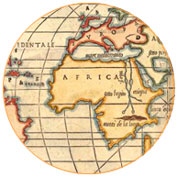|
|
|
The map is one of the oldest forms of nonverbal communication. Humans were probably drawing maps before they were writing texts. Mapmaking may even predate formal language.  As far as historians and geographers can determine, every culture in every part of the world uses and makes maps. This deep lineage reflects the descriptive usefulness of a map—a map is one of the best proofs that a “picture is worth a thousand words.” As far as historians and geographers can determine, every culture in every part of the world uses and makes maps. This deep lineage reflects the descriptive usefulness of a map—a map is one of the best proofs that a “picture is worth a thousand words.”
To demonstrate this, try this brief experiment: try describing to a friend precisely where you are now, the route you took to get to this place from your previous location, where you are in relation to, let’s say, the nearest food market and or the post office, and the route you would take to get to those two places. You’ll find that it’s very hard to effectively formulate this explanation—which requires that you create an image of space, place, relational geography, and direction—using only words. I wouldn’t be surprised if you soon find yourself drawing “air-maps,” gesturing forcefully with your hands. If you’re sitting at a kitchen table, you’ll probably start sketching an imaginary picture on the table-top, using the salt and pepper shakers as place-markers.
Congratulations, you’ve just made a map!

|



